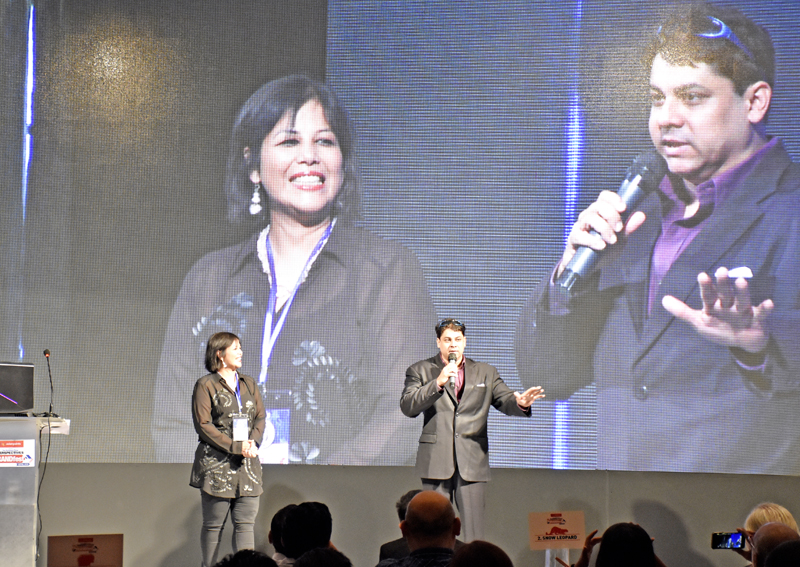Two-day fun-filled brand extravaganza kicks off
Truth well told (in the form of a story) will be shared by consumers
Kathmandu, August 5
You must have come across advertisements showing washing detergent doing miracles to pale-looking clothes with splodges of dirt.
You also must have come across commercials of cement with a message that sturdiest of physical infrastructure can be built using that particular brand of construction material.
And you may even have come across advertisements of ubiquitous instant noodles that try to convince you to consume that food stuff as a meal every day.
Well, what do you do when these commercials appear on television sets, newspapers or magazines? Often you grab the remote control and change the channel or turn over the page.
But even if you decide to watch it or read its content, you generally don’t trust what has been said or written, isn’t it? Why this disconnect?
“It’s because of poor story-telling,” Bharat Avalani, CEO of Malaysia-based Connecting the Dots, told the 3rd BrandFest Nepal 2016, a two-day fun-filled brand extravaganza organised by The Himalayan Times, which kicked off today.
Marketing, in good old days, was about creating a myth and spreading it, said the brand guru, who has been telling stories through commercials for over two decades. “Today, marketing is all about finding the truth and sharing it,” he added. “And truth well told (in the form of a story) will be shared by consumers.”
Avalani, hence, encouraged the audience of around 225 present at the event to use real-life incidents, emotions, feelings and facts to tell the story. And such stories, according to him, should inspire people to act; otherwise the money spent on creating advertisements will go waste.
So, what kind of real-life incidents or facts can be used to create an advertisement?
Alvin Teoh, executive creative director of NagaDDB, Malaysia, for instance, uses the experiences of his own life, or personal stories, and turns them into advertisements.
He has tapped into the experience of his teenage days, when he could not convey his special feelings to a girl, to create an advertisement.
He has also used the childhood behaviour of bullying his adopted younger brother now his best friend and transformed that into an ad. He has even taken inspiration from text messages and emoticons sent by his daughter, asking him to come home before she goes to bed, to create an ad.
“You can use any one of your small life experiences, such as the first crush and the first kiss, or the experience of being dumped the first time to tell a story. So, all you need to do is reflect on your own life and connect the dots.
If you can connect (those dots), you can connect with everyone else, because many of us have gone through those similar experiences in our lives,” Teoh said, encouraging advertisers to ‘be brave and honest enough to tell the real-life experiences, including shortcomings, to connect with people’.
In a nutshell, Teoh was asking those who create advertisements to treat people as people and not only as customers and consumers.
“Lately, many consumers have understood that if a brand looks at me as a consumer, then all it wants from me is money,” Teoh continued. “But if brands look at people as people, then how these brands behave, speak, represent themselves and make people feel would be very different.
This is the kindergarten stuff of marketing and yet we forget this in the pursuit of profits. So, we have to find the crossroad between human experience and brand attributes.
Once we find that intersection, there will be a human element in the ad.”
This is probably the reason why marketing gurus like Babita Baruah, senior vice president and head of India-based J Walter Thompson, have starting casting real-life heroes, apart from celebrities, to tell stories and share real-life experiences through advertisements.
“It’s a move away from glitz and glitter.... to release the qi in brands,” she said. (Qi, according to oxforddictionaries.com, is the circulating life force whose existence and properties are the basis of much Chinese philosophy and medicine.)






